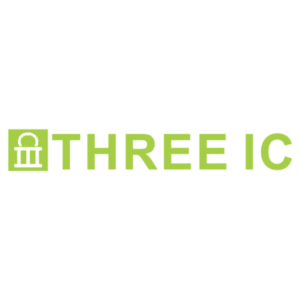

A wide range of devices are connected and enabled by the Internet of Things (IoT), allowing for seamless interaction and communication between them. It all sounds a bit daunting – you might first be wondering, what precisely is IoT and how does it operate? We’ll delve into the fascinating world of IoT in this detailed introduction, examining its significance, definition, and use cases.
IoT, or the Internet of Things, is a network of interconnected devices that communicate and share data over the internet. It automates processes, gathers valuable insights, and drives innovation across industries.
IoT seamlessly integrates the digital and physical worlds, creating a smarter, more connected environment. It optimizes operations, enhances efficiency, and enables personalized experiences.
Working together with data analytics and AI, IoT unlocks endless possibilities for automation, predictive maintenance, resource management, and safety. As it continues to evolve, businesses must think about how to embrace IoT for sustainable business outcomes.
In today’s ever-changing technological landscape, the pervasive adoption of IoT brings forth a wave of innovation and efficiency. By seamlessly connecting devices and facilitating data sharing, IoT has the power to transform our lifestyles and work environments. Let’s explore some compelling reasons why IoT is paramount in shaping our present and future:
IoT integration enables task automation, driving operational efficiency and productivity gains. With data-driven insights, businesses can optimize processes, minimize waste, and streamline operations effectively.
Businesses and organizations have access to a lot of information thanks to the IoT devices’ tremendous data influx. Real-time data analysis allows for the extraction of insightful information that can help guide decision-making.
Due to this, organizations can create effective strategies, enhance consumer experiences, and even act quickly in circumstances that could save lives. The power of IoT lies in its ability to provide actionable intelligence from the data deluge, revolutionizing industries and making a positive impact on society.
The integration of IoT applications helps businesses reduce costs by improving resource management and predictive maintenance. By monitoring equipment health in real-time, organizations can schedule repairs or replacements proactively, minimizing downtime and optimizing maintenance expenses.
Enhancing security measures is crucial in safeguarding assets, data, and privacy. The Internet of Things offers advanced security solutions such as surveillance systems, access restrictions, and environmental monitoring.
By understanding how IoT operates and its essential elements, we can delve deeper into its practical implementation. Let’s explore the operational aspects of IoT and its key components to gain a comprehensive perspective.
In order to enable seamless connectivity and data sharing between devices, the Internet of Things fundamentally depends on a combination of hardware, software, and communication technologies.
Here’s a high-level overview of the key components that make IoT work:
These are the physical objects or devices that are equipped with sensors, actuators, and connectivity capabilities. They can range from small wearable devices and sensors to large-scale industrial machinery. IoT devices are responsible for collecting data from the environment or interacting with users.
For smooth communication between IoT devices and the internet, a number of wired and wireless connectivity technologies (including Wi-Fi, Bluetooth, Zigbee, cellular networks, and Ethernet) are used to enable effective and efficient operations within the connected IoT ecosystem.
These intelligent components can detect and measure various environmental conditions like temperature, humidity, light, and motion. On the other hand, actuators are the doers in this ecosystem. They take action based on the data received from sensors. For instance, an actuator can dynamically regulate the temperature in a room by responding to inputs from a temperature sensor. Together, sensors and actuators enable a seamless interaction between the digital and physical realms, empowering automated and responsive operations.
An IoT gateway is used in larger IoT deployments and acts as a bridge between the devices and the cloud or centralized server. It gathers data from various devices, processes it locally, helps manage IOT devices, and creates secure connections to the cloud for additional processing and storage.
The cloud allows for centralized data management, real-time data processing, and the ability to scale IoT applications effortlessly, and as such plays a crucial role in IoT.
IoT generates massive volumes of data, and extracting valuable insights from this data is essential. Data analytics and machine learning techniques are employed to analyze and derive meaningful information from the IOT data, enabling businesses to make informed decisions and drive innovation.
Users need a simple way to control and communicate with IoT devices. This is what user interfaces do, which is why they are so important in IoT systems. Whether they are provided through mobile applications or web dashboards, these interfaces provide real-time data, remote control functionality, and customization possibilities, all of which are geared at improving the user experience.
The integration of these components, an IoT system comes to life as a network of connected devices that can communicate, share data, and collaborate to perform a wide range of tasks. It also enables the possibility of many IoT use cases which span various industries and sectors, from smart homes and healthcare to industrial automation and smart cities.
Internet of Things (IoT) integration plays a significant role in campus network solutions. It involves connecting various devices, such as sensors and smart devices, to the network across different campus locations. Campus networks need to provide connectivity for these devices. IoT devices generate large amounts of data, which the network should collect, process, and analyze. Security measures are crucial to protect against vulnerabilities and unauthorized access to IoT devices and data.
Scalability and management tools are required to accommodate the growing number of devices and efficiently monitor and control them. Integration with existing systems is necessary to ensure interoperability and collaboration. IoT integration enables improved connectivity, data insights, operational efficiency, and decision-making. It facilitates smart campus initiatives like smart classrooms, energy management, asset tracking, and safety systems.
Applications of the Internet of Things are real and now, and have revolutionized various aspects of our daily lives. Let’s explore what IoT is doing in some real-life examples, and how it is transforming different industries:
Smart home automation is one of the most prominent and accessible integrations of IoT technology. By connecting various devices, smart objects, and systems within a home, IoT enables homeowners to enhance comfort, convenience, and energy efficiency. Some examples of IoT in smart homes are:
IoT-capable thermostats, like the well-known Nest Learning Thermostat, can learn the preferences of the home and modify settings accordingly. Homeowners can improve energy use and lower utility expenses by controlling them remotely using smartphone apps.
Home security has also benefited from IoT integration. Smart security cameras and doorbell cameras, like Samsung’s FamilyHub and Doorbell, offer real-time video monitoring, motion detection, and remote access, providing homeowners with peace of mind and enhanced protection.
IoT-powered lighting systems, such as Philips Hue, allow users to control lighting settings, colors, and brightness through mobile apps or voice commands. They can create personalized lighting scenes and schedules, promoting energy efficiency and ambiance customization.
IoT’s impact goes beyond residential settings and extends to industrial environments, revolutionizing manufacturing processes and supply chains. Here are some notable examples of Industrial IoT (IIoT) applications:
RFID tags and IoT-enabled sensors are used to track and monitor assets all the way through the supply chain, allowing businesses to optimize inventory management, lower losses, and boost efficiency by gathering real-time data on location, condition, and utilization.
Embedded IoT devices in machinery and equipment can track performance metrics and gather information on usage, vibration, temperature, and other factors. The integration of this technology allows data to be analyzed by sophisticated analytics and machine learning algorithms in order to forecast maintenance needs, allowing organizations to plan maintenance tasks in advance and reduce unscheduled downtime.
IoT is transforming the energy sector by facilitating intelligent energy monitoring and management. Smart grids equipped with IoT sensors and devices enable real-time monitoring of energy consumption, efficient load balancing, and integration of renewable energy sources, ultimately leading to reduced costs and a more sustainable energy infrastructure.
What can be achieved in the concept of smart cities and Internet of Things? The answer to this revolves around leveraging IoT to enhance the efficiency, sustainability, and quality of urban life. Here are a few examples of IoT-driven urban development:
Cities can monitor traffic flow, detect congestion, and optimize signal timings accordingly with IoT sensors and cameras deployed along traffic routes. Using this data-driven approach to traffic management can reduce travel times, minimize emissions, and enhance overall transportation efficiency.
Sensors in garbage cans are used by IoT-enabled waste management systems to track fill levels in real-time. By using this information, trash management operations are improved, wasteful pickups are decreased, and costs are reduced, which has a positive impact on the environment.
With the integration of sensors in IoT-based parking systems to determine when parking spaces are available and to provide drivers with that information in real-time, this cuts down the amount of time needed to find parking spaces, easing traffic, and improving overall parking in cities.
The healthcare industry has embraced IoT to improve patient care, enhance operational efficiency, and enable remote monitoring. Here are a few examples of IoT in healthcare:
Wearables enabled by the Internet of Things such as fitness trackers and smartwatches, like the Apple Watch, capture crucial health information like heart rate, sleep habits, and physical activity. Using this data, people may keep track of their health indicators, keep an eye on chronic diseases, and make well-informed decisions about their wellbeing.
IoT devices enable healthcare providers to remotely monitor patients’ health conditions and collect real-time data. This allows for early detection of potential issues, personalized care plans, and reduced hospital readmissions, especially for individuals with chronic illnesses or postoperative recovery needs.
IoT integration has transformed medical devices, such as infusion pumps and glucose monitors. These devices can connect to centralized systems, automatically transmit data, and provide healthcare professionals with valuable insights for timely interventions and precise treatment.
By harnessing the power of IoT, these real-life examples showcase the transformative potential of connected devices, data analytics, and automation in revolutionizing various industries and sectors.
While IoT offers numerous benefits, its integration into businesses also introduces unique security challenges. Addressing these concerns is crucial to ensure the privacy, integrity, and availability of data and systems. Let’s delve into some security considerations for IoT:
IoT devices collect and transmit sensitive data, raising concerns about privacy breaches and unauthorized access. Protecting data through encryption, secure authentication, and access control mechanisms is vital.
IoT devices may have vulnerabilities that can be exploited by hackers. Regular firmware updates, robust authentication protocols, and secure communication channels help mitigate these risks.
The vast number of connected devices in IoT ecosystems increases the attack surface, making networks susceptible to breaches. Implementing firewalls, intrusion detection systems, and secure network protocols safeguards against unauthorized access and data breaches.
With the potential to be attacked by malicious actors, here are some tips to safeguard the integration of IoT into your business:
Implement strong authentication mechanisms, such as two-factor authentication, to ensure only authorized devices can access the IoT network.
Employ encryption protocols, such as Transport Layer Security (TLS), to protect data in transit between IoT devices, gateways, and cloud servers.
Keep IoT devices’ firmware and software up to date with the latest security patches and bug fixes to address known vulnerabilities.
Implement strict access control policies to restrict unauthorized access to IoT devices and networks.
Encrypt sensitive data stored on IoT devices and during transmission to protect it from unauthorized access.
Deploy security monitoring systems to detect abnormal behaviors and potential threats within the IoT network. Advanced analytics can identify patterns and anomalies to enable proactive threat mitigation.
By following these best practices, organizations can minimize security risks and ensure the integrity and confidentiality of their IoT deployments.
IoT’s influence extends beyond individual devices and into the realm of network infrastructure. Let’s explore how IoT works in wide area networks (WAN) and campus networks:
IoT devices in WAN and campus networks leverage wireless technologies, such as Wi-Fi, Bluetooth, and cellular networks, to establish connections. These devices utilize protocols like MQTT and CoAP for efficient data transmission.
IoT integration with WAN requires robust network infrastructure capable of handling large volumes of data and accommodating a growing number of connected devices. Scalable architectures, quality of service (QoS) mechanisms, and network segmentation are essential for optimal IoT performance.
To reduce latency and enhance real-time decision-making, IoT applications leverage edge computing capabilities. Edge devices, located closer to the data source, process and analyze data locally, reducing reliance on cloud servers and enhancing responsiveness.
Here are some key considerations regarding network infrastructure for IoT integration with WAN:
IoT deployments generate substantial data traffic. Ensuring sufficient bandwidth is available to accommodate this traffic is crucial for uninterrupted connectivity and data transmission.
As the number of IoT devices grows, network infrastructure should be scalable to accommodate the increasing load. Implementing scalable network architectures and technologies like SDN (Software-Defined Networking) allows for efficient management and expansion of IoT deployments.
Prioritizing IoT traffic and assigning appropriate QoS parameters ensures reliable and timely data transmission. This is especially critical for applications that require real-time data processing, such as industrial automation or healthcare monitoring.
The Internet of Things can open up many exciting opportunities for campus networks. What are some examples? We share some below:
Universities and educational institutions are deploying IoT-enabled campus networks to enhance security, improve energy efficiency, and streamline operations. IoT sensors and systems monitor facility utilization, manage parking, optimize lighting and HVAC systems, and enable location-based services for students and staff.
IoT deployments in cities rely on WAN and campus networks to connect diverse devices and systems. Examples include smart street lighting, environmental monitoring, waste management, and traffic management systems that enhance urban sustainability and liveability.
IoT connectivity in WAN networks facilitates fleet management solutions. Companies can track vehicle locations, monitor fuel consumption, optimize routes, and schedule maintenance, leading to cost savings and operational efficiency.
As IoT continues to evolve, its integration into WAN and campus networks unlocks new possibilities for connectivity, automation, and data-driven decision-making.
In conclusion, Internet of Things is a transformative technology that connects physical objects and devices to the digital world, enabling data-driven insights, automation, and enhanced efficiency. We explored the definition of IoT and its integration across industries.
Real-life examples demonstrated the diverse applications of IoT, from smart homes and industrial settings to smart cities and healthcare. However, alongside its benefits, IoT presents security challenges that require robust measures to protect data and systems.
Additionally, IoT’s integration in WAN and campus networks demands scalable infrastructure and optimized connectivity, that can be provided with products like Ruijie. Embracing the potential of IoT and AI opens doors to a future of increased productivity, innovation, and interconnectedness.
Cybersecurity should always be part of plan with IoT integration. So, if you’ve not yet considered it, explore security as a service for your business. Using such a service can ensure that your IoT ecosystem is secure.
We invite you to view our Sophos product portfolio for Endpoint detection and response (EDR) to ensure that all your IoT devices are secure. Your data, customers, and peace of mind will benefit immensely.
Want to know more about how the features of SECaaS can enhance your IoT deployment? THREE IC has the know-how, thanks to our SOC as a service.
Moreover, we invite you to view our ransomware solution, and our IT support services, both of which ensure your IoT integration will be secure no matter what your use case is. Contact us today for a comprehensive discussion.
IoT integration benefits small businesses by improving operational efficiency through automation and real-time monitoring, enhancing customer experiences through data-driven personalization, and enabling cost savings through optimized resource utilization. It also enables predictive maintenance to prevent equipment breakdowns and offers data-driven insights for informed decision-making. Embracing IoT integration empowers small businesses to streamline operations, reduce costs, deliver better customer experiences, and make data-informed decisions for growth and competitiveness.
To start with IoT integration, small businesses should: identify objectives, choose suitable IoT devices, establish reliable connectivity, plan data management and analytics, and prioritize security and privacy. It's crucial to determine specific goals like efficiency or cost savings. Research and select IoT devices based on functionality, compatibility, scalability, and security. Set up a robust network infrastructure for reliable connectivity. Develop a data management plan for collection, storage, and analysis, utilizing cloud-based platforms or analytics tools. Implement strong security measures, including encryption and regular updates, to safeguard devices, networks, and data. By following these steps, small businesses can successfully embark on their IoT integration journey.
Yes, IoT integration can be cost-effective for small businesses. While there may be initial investment costs associated with acquiring IoT devices and setting up the infrastructure, the long-term benefits can outweigh the expenses. IoT can lead to cost savings through improved operational efficiency, reduced maintenance costs, optimized resource utilization, and better decision-making based on data-driven insights.

THREE IC, a prominent provider of Cyber Security and IT solutions, produces the majority of the blog posts featured here. These articles are authored by a team of professionals employed at THREE IC, including content writers and marketing experts. They are dedicated to creating informative content on a wide range of subjects that are relevant to our readers.
Our team ensures that the published articles are accurate and beneficial for our clients and partners, helping them stay informed about the latest trends in Cyber Security and IT and understand how these advancements can benefit their organizations.

address
address
TEL
+65 XXXX XXXX
info@threeic.com
address
Singapore Address here
address